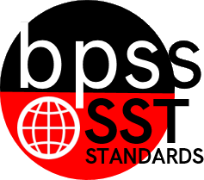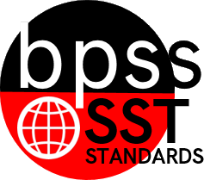3rd Grade Social Studies (Archived)
 BPS District Social Studies Standards Book
BPS District Social Studies Standards Book
SST-03 "I can ... statements"
1st Grade Social Studies
2nd Grade Social Studies
4th Grade Social Studies
5th Grade Social Studies
7th Grade Social Studies
8th Grade Social Studies
| Prioritized Benchmarks |
SST-03.1.01
Student Learning Targets:Skills (Performance) Targets
Proficiency Rubric
ResourcesWebsites Helping Your Child With Social Studies
Vocabulary
| ||||||||||||||||||||||||||||||||||||||||
SST-03.1.03
Student Learning Targets:Skills (Performance) Targets
Proficiency Rubric
ResourcesWebsites Helping Your Child With Social Studies
Vocabulary
| ||||||||||||||||||||||||||||||||||||||||
SST-03.1.04
Student Learning Targets:Knowledge Targets
Proficiency Rubric
ResourcesWebsites Helping Your Child With Social Studies
Vocabulary
| ||||||||||||||||||||||||||||||||||||||||
SST-03.1.06
SST-03.1.06 Interpret simple time lines (e.g., identify the time at which events occurred, the sequence in which events developed, and what else was occurring at the time).Student Learning Targets:Knowledge Targets
Reasoning Targets
Skills (Performance) Targets
Product Targets
Proficiency ScaleThe Student ...(1) Beginningis only able to answer basic questions about a timeline such as
(2) Developingis able to answer questions about a timeline by answer the following questions.
(3) Proficientis able to explain the meaning or interpret the information from the timeline by answering the following questions.
(4) Advanced
ResourcesVocabulary
| |
SST-03.2
Narrative for the Important Historical EventsThrough active learning experiences, third grade students gain knowledge and process information about their local community from a variety of resources. Students describe how significant people, events and developments have shaped their own community and region; compare their community to other communities in the region in other times and places; and use a variety of resources to gather information about the past. Calculation Method for StandardsStandards are larger groups of related benchmarks. The Standard Grade is a calculation of all the related benchmarks. Click on the benchmark name below each Standard to access the learning targets and proficiency rubrics for each standard's related benchmarks. | |
SST-03.2.02
Student Learning Targets:Knowledge Targets
Reasoning Targets
Proficiency Rubric
ResourcesWebsites Helping Your Child With Social Studies
Vocabulary
| ||||||||||||||||||||||||||||||||||||||||
SST-03.3
Narrative for the Economic ConceptsThrough active learning experiences, third grade students gain knowledge and process information about their local community from a variety of resources. They identify important historical events, places, and persons from the past and make connections with their present community. Students explain how people in the local community make choices about using goods, services and productive resources; how they engage in trade to satisfy their economic wants; how they use a variety of sources to gather. Calculation Method for StandardsStandards are larger groups of related benchmarks. The Standard Grade is a calculation of all the related benchmarks. Click on the benchmark name below each Standard to access the learning targets and proficiency rubrics for each standard's related benchmarks. | |
SST-03.3.01
Student Learning Targets:Reasoning Targets
Skills (Performance) Targets
Proficiency Rubric
ResourcesWebsites Helping Your Child With Social Studies
Vocabulary
| ||||||||||||||||||||||||||||||||||||||||
SST-03.4
Narrative for the Government and CitizenshipThrough active learning experiences, third grade students gain knowledge and process information about their local community from a variety of resources. They identify important historical events, places, and persons from the past and make connections with their present community. Students explain what it means to be citizens of their community, state and nation; be able to identify the functions and major services provided by local governments; use a variety of resources to gather information about local, state and national governments; and demonstrate understanding of democratic principles and practices. Calculation Method for StandardsStandards are larger groups of related benchmarks. The Standard Grade is a calculation of all the related benchmarks. Click on the benchmark name below each Standard to access the learning targets and proficiency rubrics for each standard's related benchmarks. | |


 Standard 1:
Standard 1: